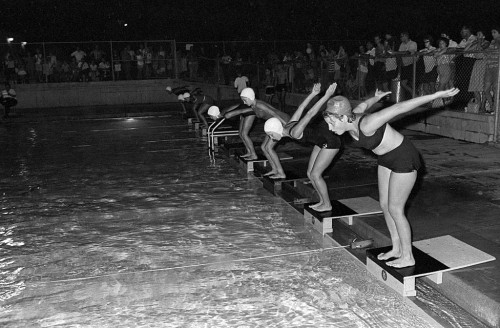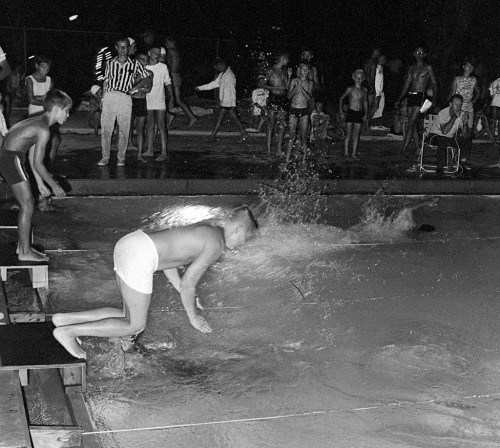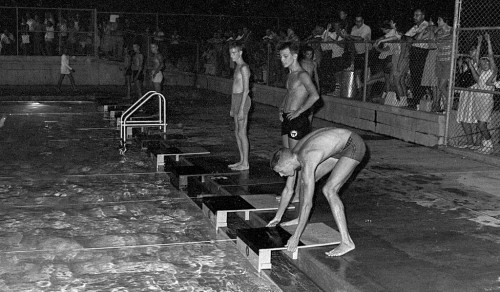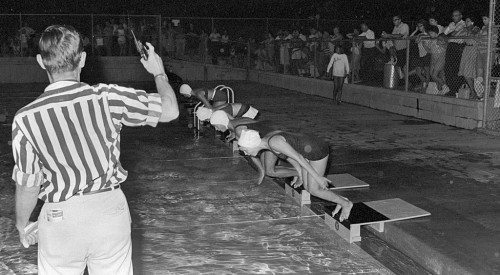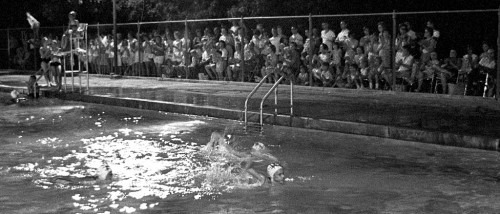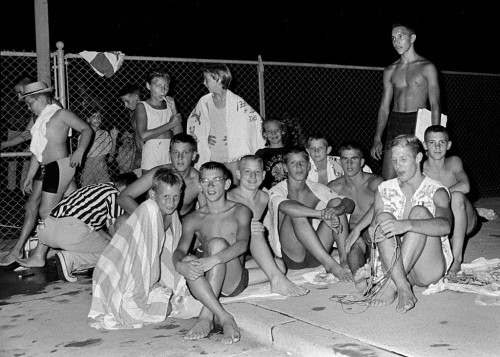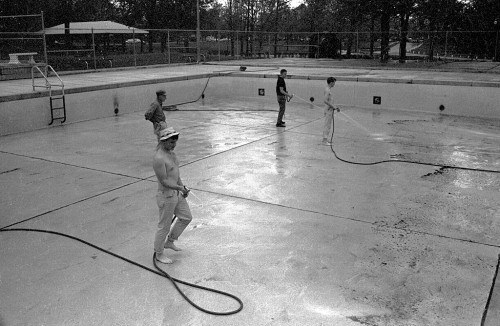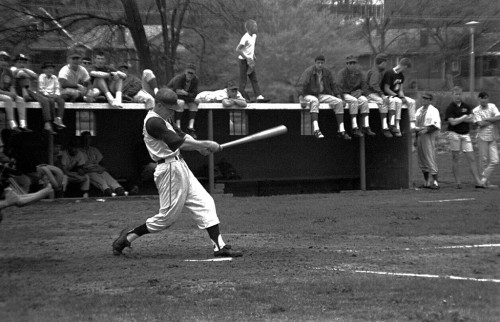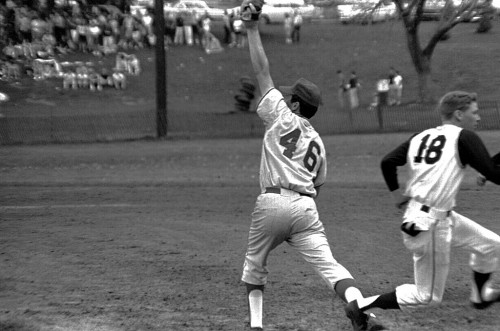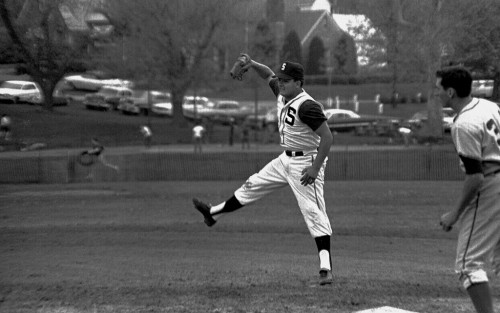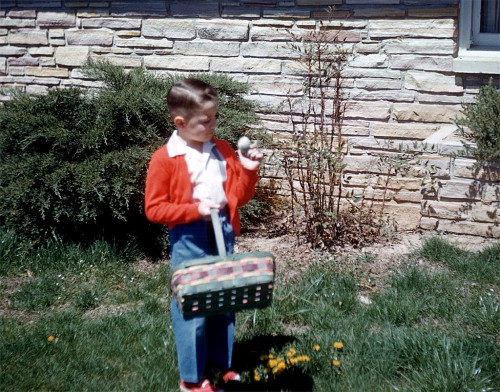 I was emptying and filing mostly family pictures that were still in slide trades from an Ansco slide projector that was long ago retired. These photos of Easter 1962 were in the mix. I find them interesting for things that are in the background of some of them.
I was emptying and filing mostly family pictures that were still in slide trades from an Ansco slide projector that was long ago retired. These photos of Easter 1962 were in the mix. I find them interesting for things that are in the background of some of them.
Brother Mark inspects an Easter egg he’s found in the front lawn. You can click on the photos to make them larger, but I’ll warn you that some of them aren’t all that sharp.
He’s listening for the sound of the ocean
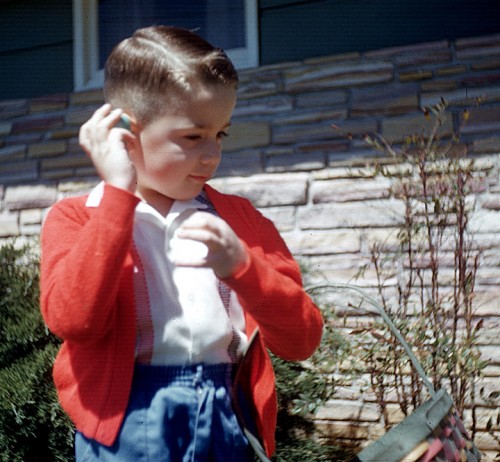 Sometimes he gets things a little confused. He remembers hearing someone saying that you can hear the sound of the ocean if you hold a shell up to your ear. He didn’t get the part that it had to be a SEA shell, not an EGG shell.
Sometimes he gets things a little confused. He remembers hearing someone saying that you can hear the sound of the ocean if you hold a shell up to your ear. He didn’t get the part that it had to be a SEA shell, not an EGG shell.
Scampering past the Ailor house
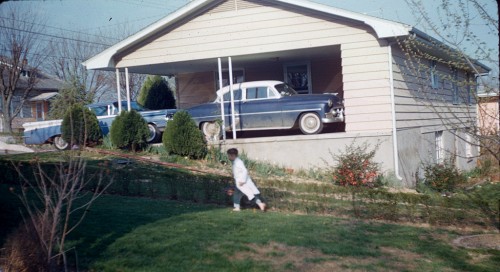 Mark is running up the hill on the west side of the house. The Ailors lived there then. The hedge between the two houses has grown up over the years and some maple trees that we planted as saplings are huge and just about the end of their life.
Mark is running up the hill on the west side of the house. The Ailors lived there then. The hedge between the two houses has grown up over the years and some maple trees that we planted as saplings are huge and just about the end of their life.
A view down Kingsway Drive
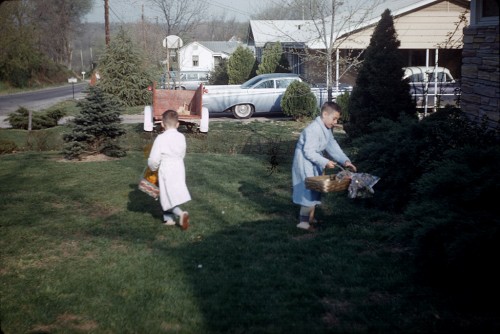 That’s Brother David on the right The white house down the hill, occupied by the McCunes in 1962, has been torn down. The basketball goal would have belonged to Bobby and Gary Garner. I see the Ailor car still has snow tires on it. They must be afraid that winter is going to make one more pass.
That’s Brother David on the right The white house down the hill, occupied by the McCunes in 1962, has been torn down. The basketball goal would have belonged to Bobby and Gary Garner. I see the Ailor car still has snow tires on it. They must be afraid that winter is going to make one more pass.
Here’s what the neighborhood looked like from the air.
Hunting eggs was a challenge
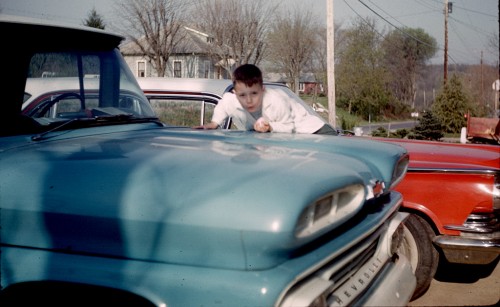 The Easter Bunny liked making things a challenge. This egg was located under the windshield wiper. That’s Dad’s Chevy truck in the foreground and our 59 Buick LaSabre station wagon in the background. Ernie Chiles hadn’t taught me to drive yet, so the right front fender is uncreased.
The Easter Bunny liked making things a challenge. This egg was located under the windshield wiper. That’s Dad’s Chevy truck in the foreground and our 59 Buick LaSabre station wagon in the background. Ernie Chiles hadn’t taught me to drive yet, so the right front fender is uncreased.
Easter egg hunt at Capaha Park
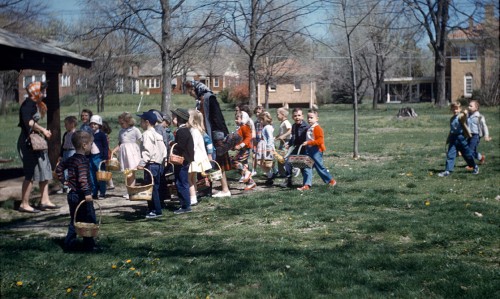 I’m not sure what group this was. Mark’s in the red shoes and sweater, so it has to be some of his friends or his class. This pavilion is east of the ballfield and north of the pool.
I’m not sure what group this was. Mark’s in the red shoes and sweater, so it has to be some of his friends or his class. This pavilion is east of the ballfield and north of the pool.
The Boat House in background
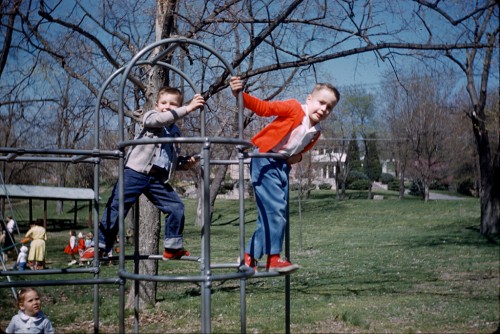 When the kids weren’t stomping errant Easter eggs, they were climbing on the playground equipment. Cape’s landmark Erlbacher Boat House is in the background.
When the kids weren’t stomping errant Easter eggs, they were climbing on the playground equipment. Cape’s landmark Erlbacher Boat House is in the background.
Mark stands out
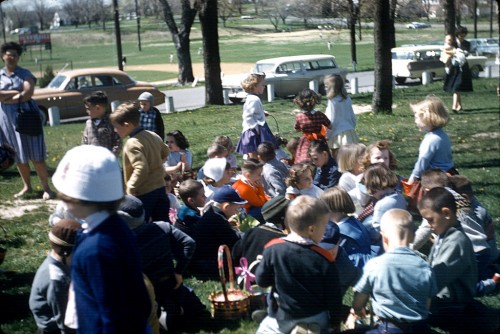 Notice how Mark is placed right in the middle of the group and how his bright red sweater takes your eye right to him? Mother recognized that he had just a few cute years in him, so she tried to make him as visible as possible during that small window of time.
Notice how Mark is placed right in the middle of the group and how his bright red sweater takes your eye right to him? Mother recognized that he had just a few cute years in him, so she tried to make him as visible as possible during that small window of time.
Capaha Field is a lot fancier today.
Capaha Pool is history
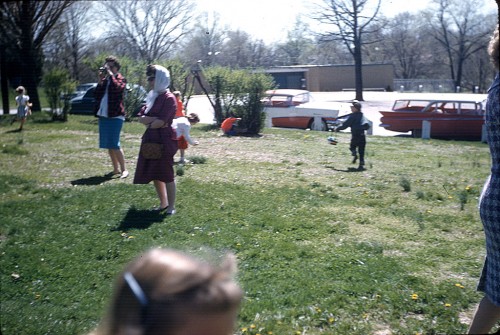 I was all set to delete this shot. At first glance, I thought that it wasn’t overly sharp and there was no clear center of interest. Then I got to looking at it like a photographer in the Ohio University Fine Arts program and convinced myself that it was art because of all of the interesting elements. Notice how the running boy and girl and the one bending over have been frozen in time, never to reach their goals. The two women on the left are oblivious to the action that’s going on behind them. The woman on the right keeps you from sliding out of the frame and the little girl at the bottom adds mystery.
I was all set to delete this shot. At first glance, I thought that it wasn’t overly sharp and there was no clear center of interest. Then I got to looking at it like a photographer in the Ohio University Fine Arts program and convinced myself that it was art because of all of the interesting elements. Notice how the running boy and girl and the one bending over have been frozen in time, never to reach their goals. The two women on the left are oblivious to the action that’s going on behind them. The woman on the right keeps you from sliding out of the frame and the little girl at the bottom adds mystery.
Or, it could just be a fuzzy picture. Anyway, you won’t see this view today: the Capaha Pool was torn down last year.
Other Easter stories
- Here’s a photo of Cherry Hill as it looks today, plus a video of Mark’s kindergarten class hunting eggs on a windy day at the park.
- Me on the lap of a scary Easter Bunny

